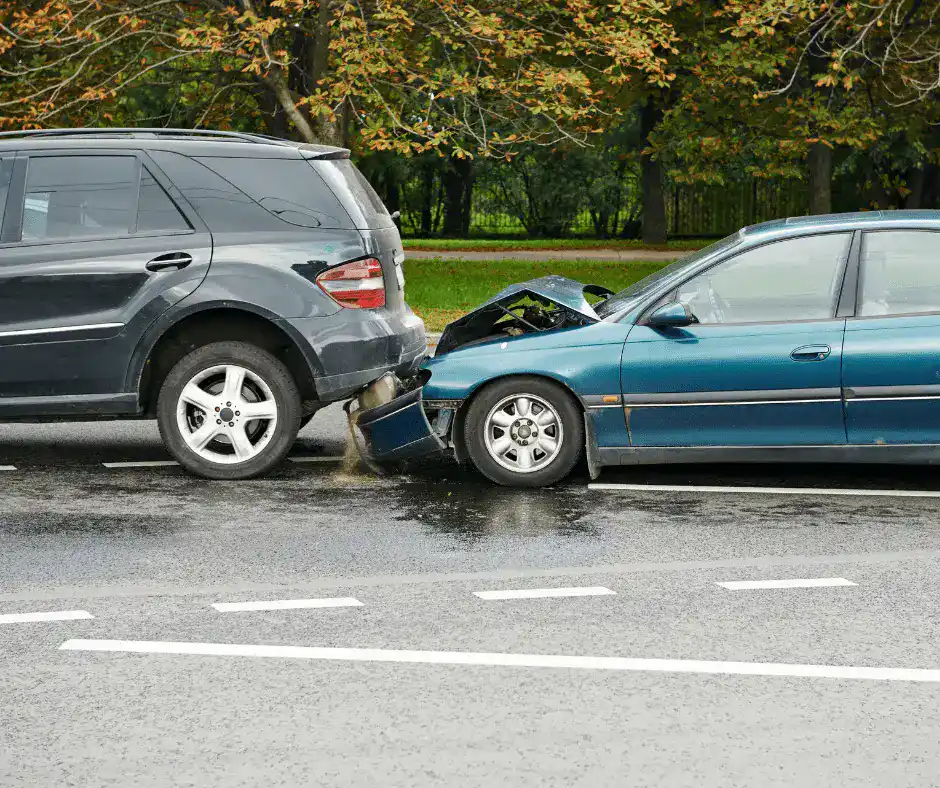Payout for Rear-End Collisions in California
Key Takeaway: Rear-end collisions in California can result in significant injuries and property damage, prompting victims to pursue personal injury claims. However, there’s no average payout for a rear-end collision in California due to the unique nature of each case. Factors such as the extent of injuries, economic losses, and non-economic damages influence the settlement. By seeking legal guidance, you can maximize your chances of receiving adequate compensation for your losses.
Rear-end collisions are typically unexpected and can result in serious injuries and major property damage. California allows the victim of a rear-end crash to file a personal injury claim when the collision occurred due to someone else’s negligent or wrongful act.
Every rear-end collision is different, so every rear-end crash settlement is different. Thus, there is no average rear-end collision settlement in California. The settlement for a rear-end crash will depend on a variety of different factors, like the extent of the victim’s injuries and their chances of a full recovery. Contact a California car accident attorney at Beliz Law today to discuss a fair rear-end collision settlement amount for your case.
What Losses Count Toward a Rear-End Collision Settlement?
In California, a personal injury judgment is designed to compensate you for the losses you suffered as a result of the at-fault party’s negligence. Therefore, it is impossible to calculate the average payout for a rear-end collision without reviewing the details of a case. After a rear-end crash, common economic losses include:
- Medical bills,
- Rehabilitation costs,
- Lost wages, and
- Loss of future earning capacity.
Proving economic damages is relatively straightforward as long as you keep a record of the costs you incur due to the accident. Medical expenses can make up a large chunk of your economic losses. Thus, someone who suffers a more serious injury in a rear-end collision will likely incur more losses stemming from medical costs alone.
In addition to economic damages, plaintiffs can recover non-economic damages in a personal injury claim. Non-economic damages represent a more abstract form of damages that aim to compensate you for things like:
- Loss of quality of life,
- Emotional distress,
- Disfigurement,
- Pain and suffering,
- Anxiety, or
- Psychological trauma.
The abstract nature of non-economic damages makes them more confusing to understand and harder to calculate. Our team can consult with economic experts who can give an accurate market value for your losses to help calculate a fair settlement offer.
What Is Considered a Rear-End Collision?

A rear-end car accident occurs when a car collides with the vehicle in front of it.
According to the National Highway Traffic Safety Administration (NHTSA), approximately 5,250,837 police-reported car accidents occurred throughout the United States in 2020, resulting in 2,282,015 injuries. Inevitably, some of these accidents are rear-end collisions.
In the United States, there are more than eight million car accidents annually, with rear-end collisions accounting for about 41.6% of all accidents between two vehicles.
Causes of Rear-End Collisions in California
Though avoiding a rear-end crash may seem easy, they occur with alarming regularity. In many cases, rear-end collisions happen when one car is stopped or moving very slowly, and a second vehicle strikes it from behind. This scenario frequently occurs in high-traffic areas when drivers need to stop with little notice.
Factors that may cause a rear-end collision include:
- Using social media while driving,
- Applying makeup while driving,
- Eating while driving,
- Texting and driving,
- Following too closely,
- Talking with passengers, and
- Driving at excessive speeds.
The cause of the rear-end collision will help determine whether you can successfully recover through a personal injury claim.
Even if you share some blame for the accident, you may still be able to recover. California applies the rule of pure comparative negligence to personal injury claims. That means even if you were partially responsible for the collision, you can still bring a personal injury claim against the other party and collect compensation. However, your recovery is reduced by your percentage of fault. For example, if the judge finds you 30% at fault for the accident and awards you $200,000, you will recover $140,000.
How Can I Maximize My Rear-End Collision Settlement?
No one anticipates a rear-end collision. As a result, many people think their hands are tied until they contact an attorney to review their case. However, there are a few steps you can take to maximize the amount of information you can provide your lawyer to build a case.
Report Your Collision to Authorities
You should contact law enforcement and request that an officer come to the accident scene as soon as possible. Someone else may contact law enforcement for you upon seeing the collision, but you should call 9-1-1 just in case. The police officer who responds to the scene will create an accident report that contains basic information about the crash and the officer’s impression of who caused the accident.
Seek Treatment for Your Injuries
If you suffer an injury in your rear-end accident, you should seek medical treatment immediately. Rear-end collisions can cause whiplash, which can result in injuries to your neck and spinal cord. In some cases, spinal cord injuries do not present themselves immediately. Thus, even if you do not see apparent injuries, you should still seek a medical evaluation to verify that you did not suffer a hidden injury.
Additionally, you can start preserving documentation of your medical expenses with your first doctor visit.
Collect Evidence from the Accident Scene
The strength of your rear-end accident case will depend on what evidence your attorney can present to prove the opposing party’s fault. You can collect some of this evidence at the accident scene immediately after the collision.
You may be able to collect the following information at the scene:
- Details about the scene of the accident, like locations of nearby surveillance cameras that may have recorded the collision;
- Photographs of the collision;
- Photographs of your injuries; and
- Statements and contact information for any eyewitnesses.
Your attorney cannot recreate the accident scene once it gets cleaned up. That means the information you collect at the scene may be the best picture they get of the accident.
Contact The Beliz Law Firm to Discuss Your Potential Rear-End Settlement Amount in California
A car accident lawyer can help you recover a rear-end collision settlement that fairly compensates you for your financial losses. Our team of attorneys has years of experience handling car accident cases. Whether you are seeking a minor rear-end collision settlement or suffered a significant injury, the Beliz Law Firm is here for you. Contact us today.
FAQs About Average Settlement for Rear-End Collisions in California
What is the average settlement for a rear-end collision in California?
The average settlement for a rear-end collision in California typically ranges between $10,000 and $100,000, depending on the severity of injuries, property damage, medical costs, and whether the at-fault driver acted with gross negligence. Minor injury cases may settle on the lower end, while serious or long-term injuries can result in much higher compensation.
Who is at fault in a rear-end collision in California?
In most cases, the rear driver is presumed to be at fault in a rear-end collision due to their legal obligation to maintain a safe following distance. However, exceptions exist if the front driver acted recklessly or made a sudden, unexpected stop without cause.
What factors affect the settlement amount in a rear-end accident?
Key factors that influence your settlement include:
- Severity of injuries
- Medical expenses (past and future)
- Lost income or reduced earning capacity
- Pain and suffering
- Property damage
- Insurance policy limits
How long does it take to settle a rear-end collision case in California?
Settlement timelines vary, but most rear-end collision claims in California resolve within a few months to over a year, depending on the complexity of the case, extent of injuries, and cooperation from the insurance company.
Do I need a lawyer for a rear-end collision claim?
While not legally required, hiring a personal injury attorney can significantly improve your chances of a fair settlement. Attorneys handle negotiations, gather evidence, and ensure all damages—including future costs—are accurately assessed and pursued.
Can I still recover compensation if I was partially at fault?
Yes. Under California’s comparative negligence laws, you can still receive compensation even if you were partially at fault. However, your settlement will be reduced based on your percentage of responsibility.
What should I do immediately after a rear-end collision?
After a rear-end collision, you should:
- Call 911 and report the accident
- Seek medical attention
- Document the scene with photos and witness information
- Exchange insurance and contact info
- Avoid making statements to the other driver’s insurer
- Contact a personal injury lawyer
